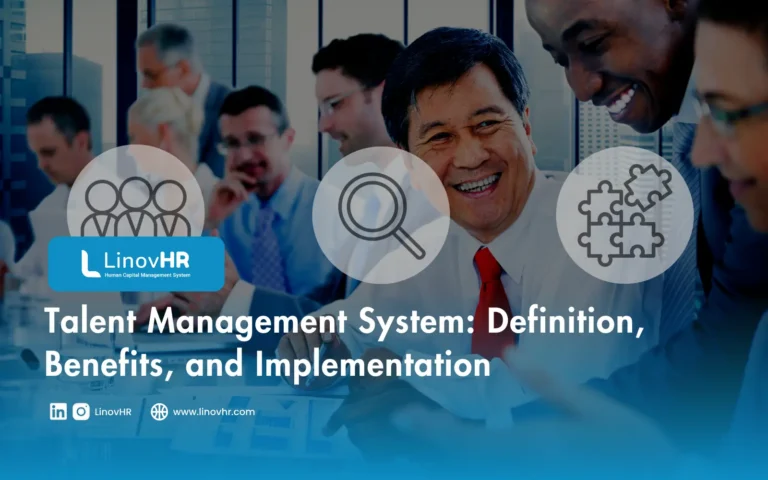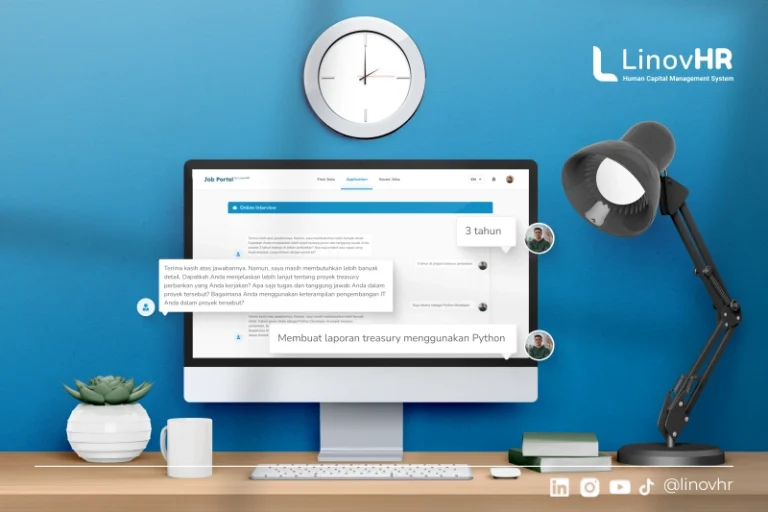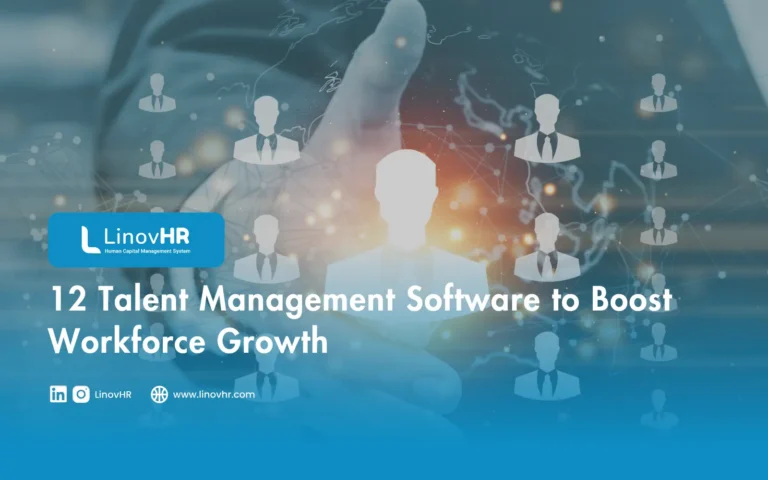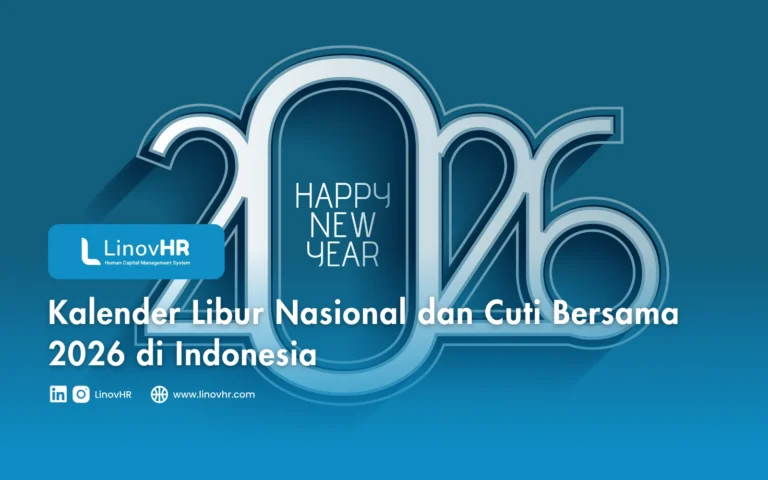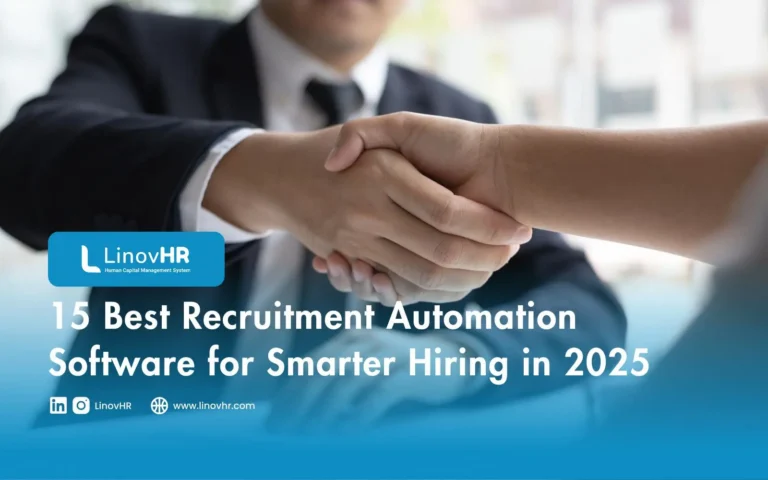In today’s competitive business environment, attracting, developing, and retaining top talent is crucial for sustainable growth.
Companies are no longer just looking for software to manage employees, otherwise they need a comprehensive talent management system that connects all aspects of human resources, from recruitment to succession planning.
This article explores what a talent management system is, why it matters, the key benefits it offers, and how your company can implement it effectively to achieve long-term success.
What Is a Talent Management System?
A talent management system is an integrated suite of software tools designed to manage the entire employee lifecycle. It combines recruitment, onboarding, performance management, learning, compensation, and succession planning into one cohesive platform.
The goal is to ensure that the right people are in the right roles and that their skills continue to grow in alignment with the company’s objectives. Unlike traditional HR systems that focus mainly on administrative functions, a talent management system emphasizes strategic growth and employee engagement.
It helps HR professionals make data-driven decisions about hiring, training, and promotion while aligning talent strategies with overall business goals.
By using a talent management system, companies can foster a culture of continuous development, improve workforce performance, and build a stronger leadership pipeline while maintaining transparency and collaboration across departments.
Also read: 12 Talent Management System Software to Boost Workforce Growth
Key Benefits of a Talent Management System
Before adopting any technology, it is important to understand the tangible advantages it can bring. A talent management system offers several significant benefits for businesses of all sizes.
1. Streamlined Recruitment and Onboarding
A TMS simplifies the entire recruitment process by automating job postings, tracking applicants, and managing candidate communication. Once hired, new employees experience a smooth onboarding journey with clear learning paths and digital documentation.
2. Improved Employee Engagement and Retention
Tools for goal tracking, feedback, and recognition, companies can enhance employee satisfaction and reduce turnover. Engaged employees are more likely to stay motivated and contribute meaningfully to company success.
3. Continuous Learning and Development
A strong talent management system integrates with a learning management system or LMS, enabling personalized training programs and skill development plans. This ensures employees keep growing in line with evolving business needs.
4. Enhanced Performance Management
Performance reviews become data driven and transparent. Managers can track progress through measurable KPI’s, identify top performers, and create targeted improvement plans for underperforming employees.
5. Succession Planning and Leadership Development
Talent management system platforms help identify high potential employees early. With structured development plans, companies can prepare future leaders and ensure smooth transitions in key roles.
6. Data Driven HR Decisions
With analytics and reporting capabilities, HR teams gain valuable insights into workforce performance, talent gaps, and employee engagement trends. This empowers HR to make strategic, evidence based decisions.
How to Implement a Talent Management System Effectively
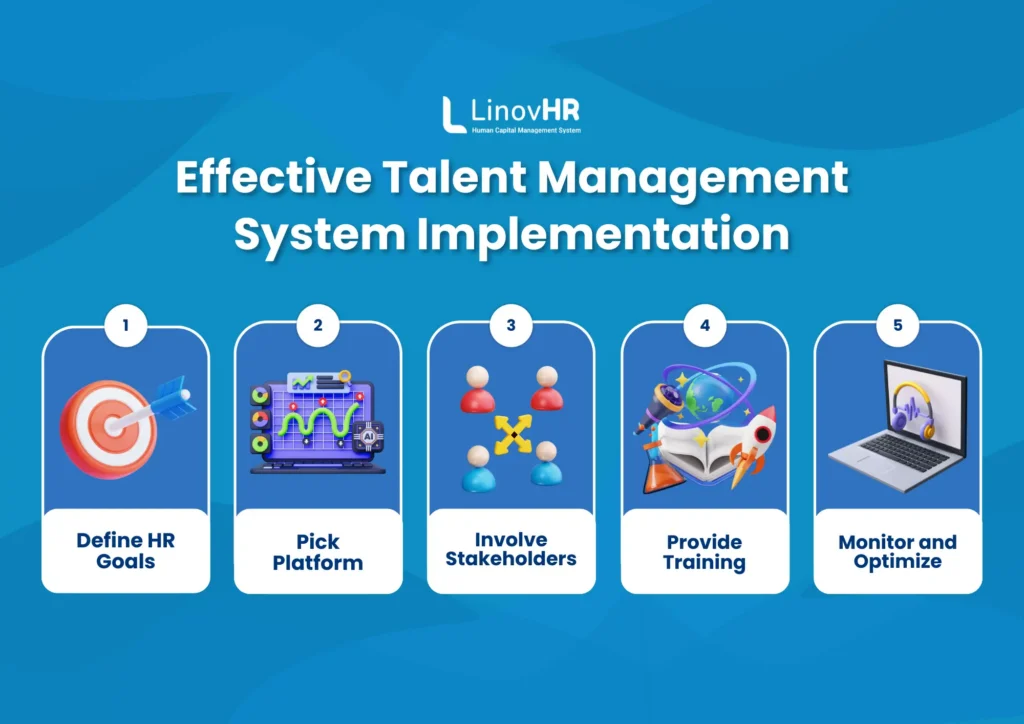
Implementing a talent management system requires thoughtful planning and collaboration across departments. Below are key steps for successful execution.
1. Define Your HR Goals
Start by identifying your company’s objectives, whether it is improving retention, accelerating hiring, or developing future leaders. Clear goals will guide your system selection and customization process.
2. Choose the Right Platform
Select an HR software solution that aligns with your company’s structure and integrates seamlessly with your existing HRIS. Prioritize systems that offer scalability, user-friendly interfaces, and strong data security measures.
3. Engage Stakeholders Early
Involve HR leaders, department heads, and IT teams from the start. Their input ensures the system meets real business needs and gains company-wide support.
4. Provide Proper Training
Before launching, ensure all users receive adequate training. This maximizes adoption and helps teams fully utilize the talent management system capabilities.
5. Monitor and Optimize
After implementation, continuously monitor performance metrics and collect feedback. Regular updates and optimization will ensure your talent management system evolves with your company’s growth.
Strengthen Your Talent Strategy with LinovHR
HR teams often spend too much time on administrative tasks rather than strategic talent development. Without an integrated system, identifying and nurturing future leaders becomes difficult, and employees may feel unsupported in their growth.
LinovHR’ HRIS offers a comprehensive solution that addresses these challenges with modules such as competency management, career path, succession management, and performance management.
LinovHR is more than just software and it becomes a strategic partner in managing and developing talent. Request a free demo of LinovHR HRIS today and discover how its talent oriented modules can elevate your workforce performance.


